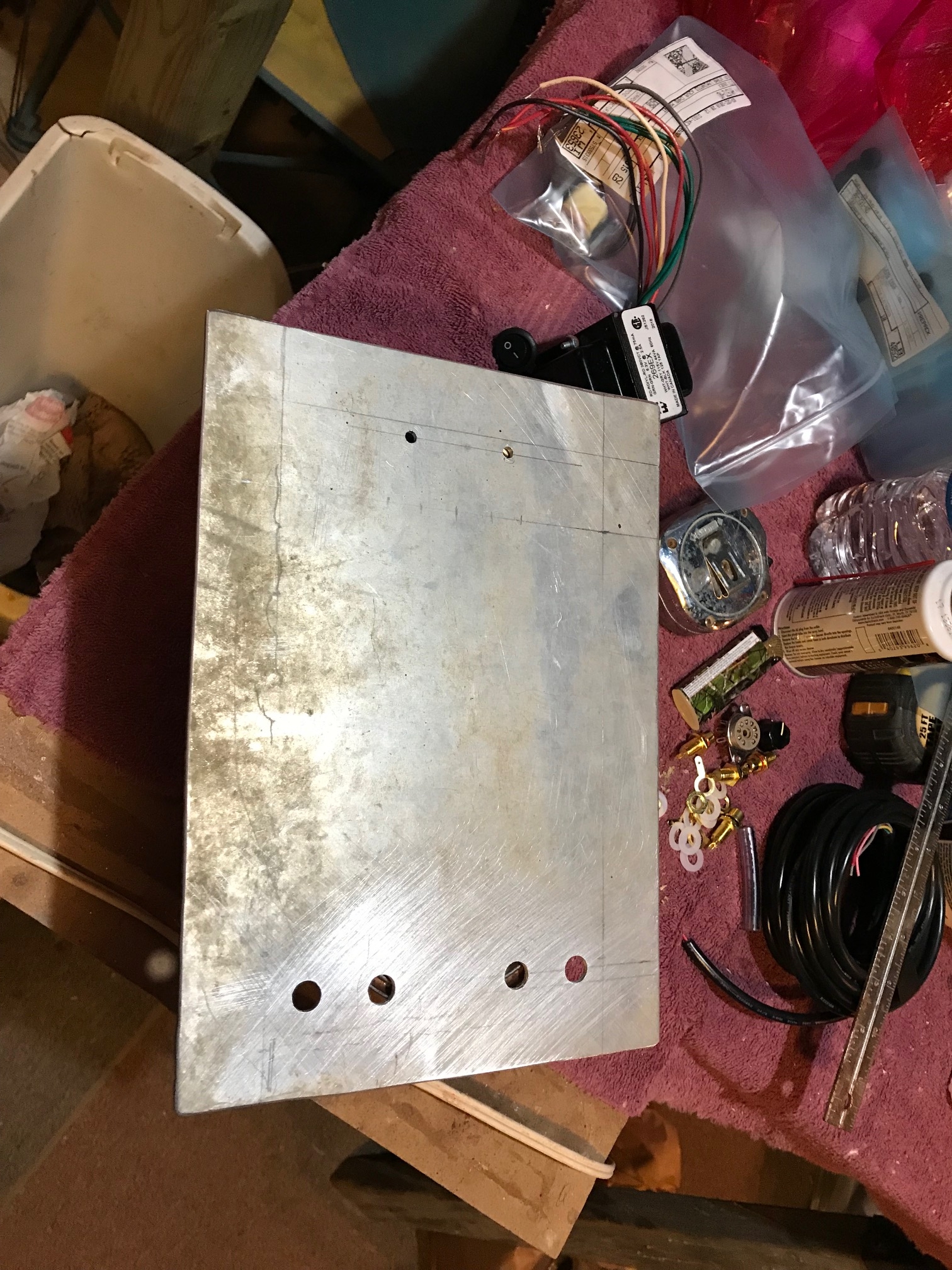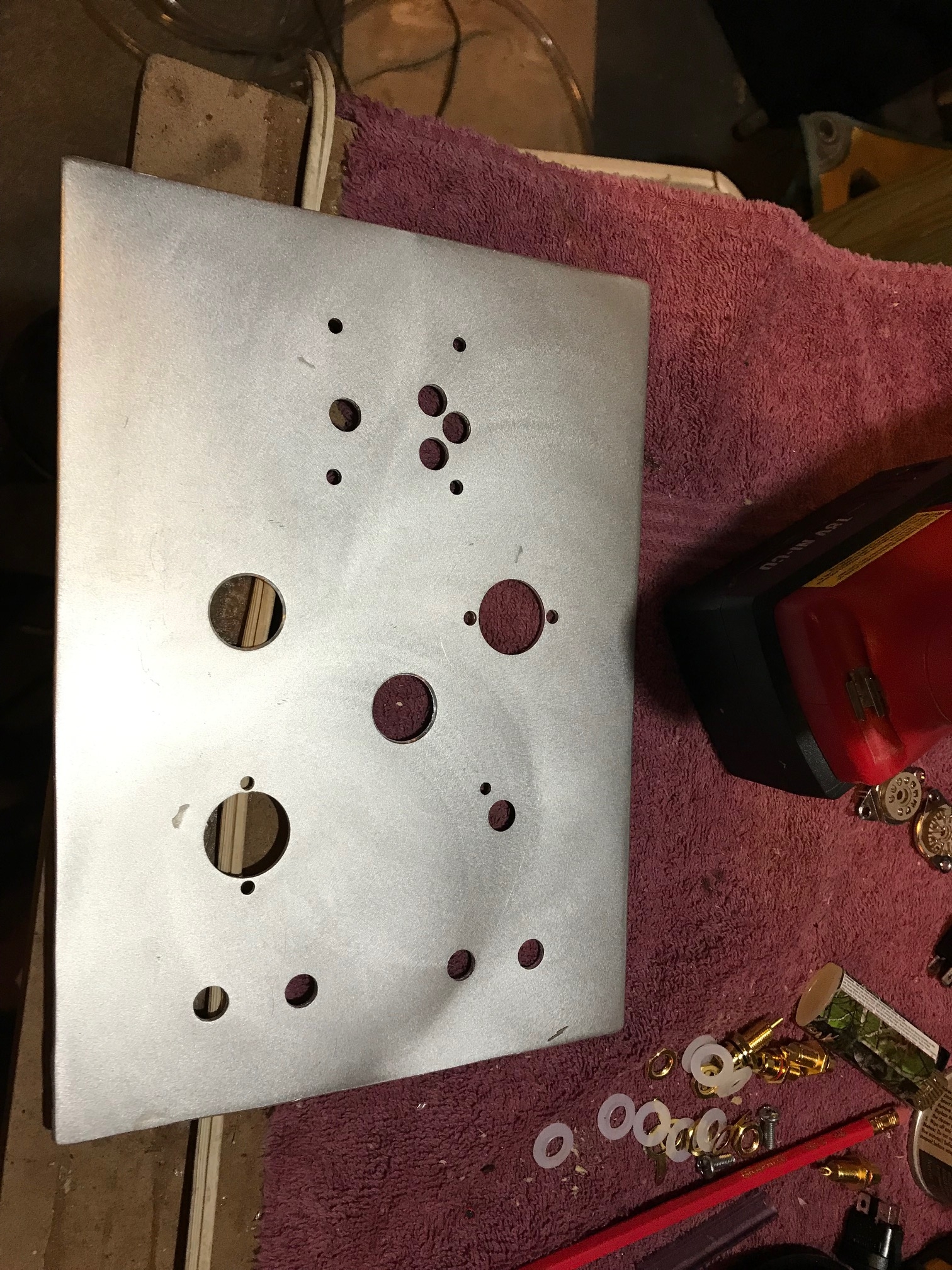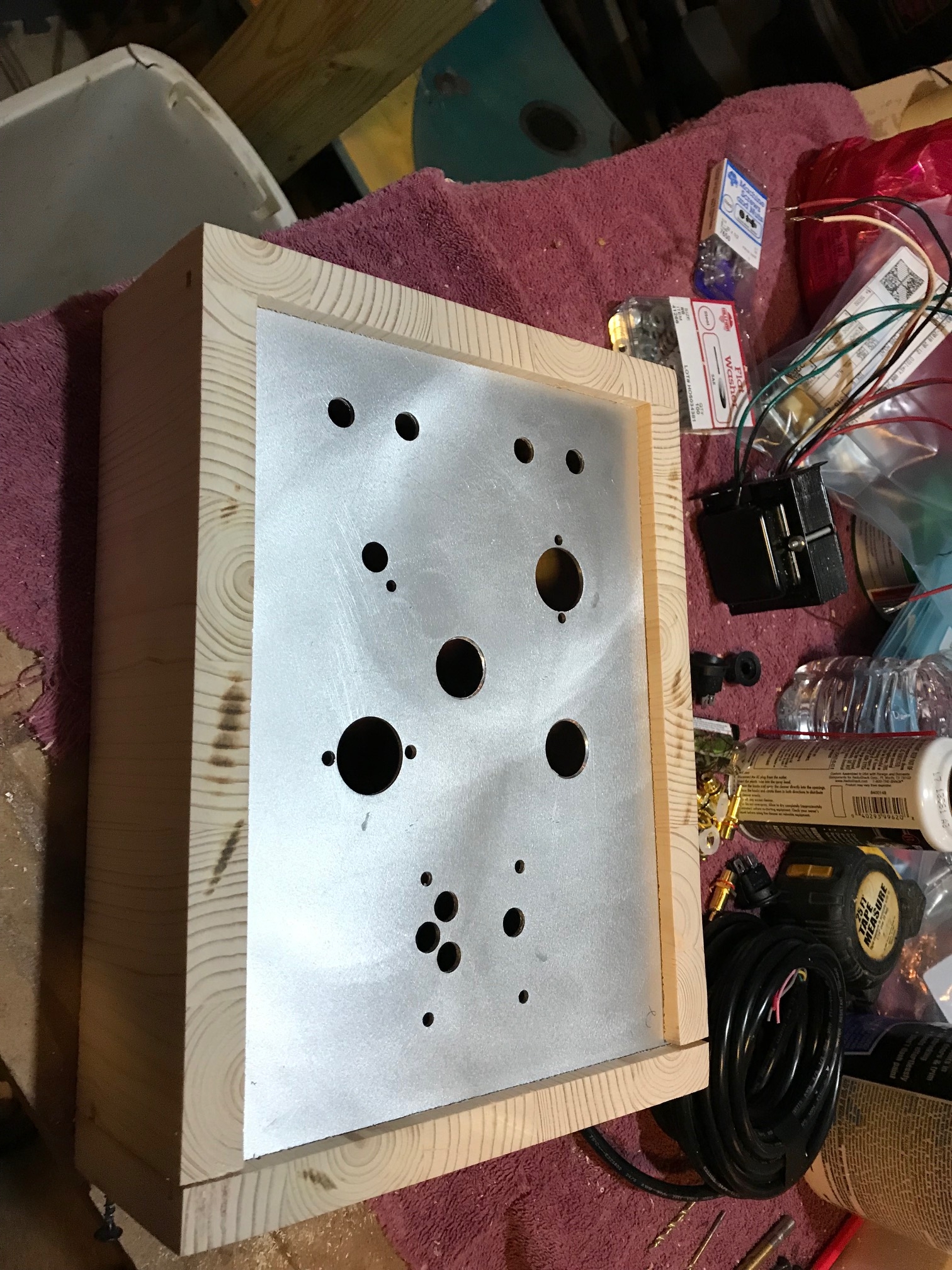Site Links
Howdy, Stranger!
It looks like you're new here. If you want to get involved, click one of these buttons!
Quick Links
Categories
Who's Online (0)
4s Universal tube pre
With lots of help from @Tom_S ; I am attempting to build the 4sUniversal tube preamp found here; http://diyaudioprojects.com/Tubes/Universal-Tube-Preamplifier/ He also thought it best to do a writeup. I have a couple free days not dictated by overtime or homework and hope to get this thing up and running in that time. Fingers crossed.
Keep in mind, I hate electricity and electricity hates me. It's a relationship that goes waaaaay back to childhood.
I wired our new house, and all the figuring required for that, which is not much, mostly just very basic stuff. Something learned was to not trust my memory on whether the breaker to the circuit being worked on was indeed off and never, UNDER ANY CIRCUMSTANCES, pee on an electric fence. Trust me on that one. Seriously, never ever do it. Not even to a drunk buddy. Other than that, I know about as much about electronics as my dog does rocket ships.
There is likely to be some smoke, maybe fire, but hopefully no electrocutions.
Basic sheet of aluminum which just so happens to be the same thickness as a tablesaw blade. You'll see why later.

Drilling holes for the transformer, wires, tube sockets, phone plugs, etc.

And the reason for the aluminum sheet being the same thickness as a saw blade. For the bottom and sides I cut a few pieces of scrap to ~3" x whatever length it took to fit around the metal sheet then cut a groove in the board for the sheet to slide in. Figuring this project may be dissembled many times during the build, and facilitating my clumsy hands and soldering ability, the ends are simply held in place by screws. Not pretty, but unscrew one end and the metal sheet holding everything slides out making things easier to work on.

Comments
On the EZ81 (rectifier tube), red wire goes to pin 1, other red to pin 7 on that socket. The Red & Yellow lead will go to your ground buss, starting at the (negative side of the) 33uf cap. The EZ81 and 12AX7 don't have the same pinout, but you can Google the and see the connections on the data sheets.
On the Hammond transformers, they give you the option of wiring the primary side to run off 115 or 125 volts. I know in our neighborhood the voltage coming in from the pole is high (124+), so I would use the White & Black, then just heat shrink the gray and tie it off somewhere.
The little > symbol represents a heater coil for a tube. You'll see two for the 12AX7 tube. Those tubes have two 6.3v segments in the heater. You'll be running them in parallel, so one lead goes to pin 9, the other goes to both pins 4 & 5. You could tie 4 & 5 together with a small piece of wire and just wrap your heater lead around that. You can use the red & white twisted wire I sent to go between a terminal strip near the transformer and the tube sockets. You can do separate runs to each tube socket that way. That might also make it easier to wire those 100 ohm resistors to the ground buss.
The caps should have a designation for the negative terminal. On the axial caps, the arrow markings in the white stripe point to the Neg side of the cap. You'll also notice that end is welded to the actual case of the cap. The lead on the Positive side should come out of the middle of an insulator.
I'll be on the road heading to my brother's tomorrow. It's only a 4 hour drive and I'll check in here before we leave around 10am and then when we get to the hotel. Bruce has a nice picture of his wiring in the article - that might help answer some questions, but you can't quite see everything. I know the basics, but I'm not what you could call a tube guru. If anyone else can help along the way, please feel free to chime in. I know Bill and Craig both know their way around tube circuits.
I usually use a terminal strip when running heater wires to multiple tubes. It's just easier than trying to cram 3 wires into a lug on a tube socket. You can also use that terminal strip to connect those 100 ohm resistors to ground. They just reference the heater supply to ground so it isn't floating at some unknown voltage - they can tie in anywhere along the 6.3v heater line. I would use the twisted wire for the heaters. The twisting helps so there's less chance of hum being picked up in other wiring. Similar to balanced signal connections, one wire is swinging positive while the other is neg, so twisting theoretically minimizes the induction field. Most people also twist the red HV leads on the transformer before they reach the rectifier tube.
B+ goes to the two 100K plate resistors on the 12ax7. You can tie both of those 100k's to a terminal lug (not a mounting/grounded one!) near the socket and then run an insulated wire to the +100uf/470K junction. You can see in a photo in the article, his 100uf cap and terminal strip was close enough to reach the plate resistor leads.
Your Red/Yellow lead - yes, goes to the ground buss that connects the neg sides of the caps. Leave some room for other ground connections - all the signal grounds will tie into that buss too - then to the switch for chassis grounding. You can tie the output RCA and pot grounds together, then run them back. Same with the inout jacks and the 470K resistors. It's a modified star ground, since this is a fairly simple circuit. I usually run a separate ground wire for the cathode resistors, since they complete the circuit and will have substantial current flow. Think of those as the reciprocal of the B+ line as far as current goes.
1) Make sure the aluminum top plate is properly connected to earth ground for safety. Then your B+ power supply's ground must be correctly tied to this point as well. This is crucial for safety! Tom or I can go into more detail if needed.
2) That Alps volume pot is nice but its metal case (the threaded mounting shaft and front plate) are electrically tied to the ground lugs. You need to electrically insulate it from the aluminum top plate. Otherwise you create a ground loop and will get some crazy sounding noises. Especially since this preamp has some decent gain. On my personal projects I usually mount the pot through the front wooden case panel, so it is floating. On a rebuild I did for a friend's preamp he had the Alps pot mounted just like you do. There were these really strange swooshy noises. Took me a while to hunt down that issue. I ended up drilling the through hole over sized and used an insulating shoulder washer set, like your insulated RCA connectors use.
See - it's always better when the community helps out. Heck, I didn't even know about the Alps case being grounded.
Yes on the grounding to the Neg end of the 33uf. You can run a piece of solid wire over to that other lug on the same terminal strip for more real estate to ground everything else. Terminal strip 2 does not get grounded.
100ohm resistors look good - not directional. They might look smaller because they are a different brand, but those do look pretty small. The Digikey part number shows a 1/2 watt.
You should see some resistance between 4 & 5 of the EZ81. That's the secondary winding of the transformer.
Just think if one of the high voltage transformer wires or B+ chafed and touched the top plate or a screw? If that switch was in the open position the plate would be at HIGH VOLTAGE potential and possibly lethal.
The proper method is to connect signal ground to earth (chassis) ground through a R-C or diode network. The R-C network would be a ~100 ohm resistor in parallel with a small X2 rated cap. You can see an example of this in the power supply schematic for this project:
http://diyaudioprojects.com/Tubes/EL84-Push-Pull-Tube-Amp/
I have also used two 1N4007 diodes in parallel connected in opposite polarities.
Tom, connecting the signal ground bus directly to the chassis is definitely safe, but there is always a chance that can cause some noise.
If you don't have the resistor & x2 cap on hand, you can just connect the Neg side of the 33uf (your main ground point) to the chassis at the same point as the EIC connector earth connection. If you have any hum, you can order those parts and add them later, but I'm betting you'll be fine. Use the bare copper buss wire for the input/output signal grounds. Take that back to Neg side of the 33uf cap with 1 wire. It looks like he tied the 1.2k Cathode resistors to that same buss wire. Those, along with the 470k resistors from the input jacks are what's obscured by the coupling caps in the photo.
Just another tip - you can use a tube socket screw to mount a terminal strip. That can sometimes save you from drilling another hole and keep things tidy.
I would start with a 1A fast blow fuse, if only because they are so common.
InDIYana Event Website
That Fender 12AX7 is the one I would stick in there for the maiden voyage. It's probably just rebranded Russian or Chinese type. You might want to confirm your AC voltages are going to the right places before firing it up with tubes in it. Without the EZ81, the caps won't even charge, so it's a little safer to probe around in there.
I agree with Wolf - maybe a vintage jewel lamp socket like on an old Fender.
Signal-wise, it's AC so the amp won't care. But that means your fuse in not on the hot line anymore, it's on the neutral. If something is wrong and you pop a fuse, you'll still have voltage between the hot & chassis ground.
InDIYana Event Website